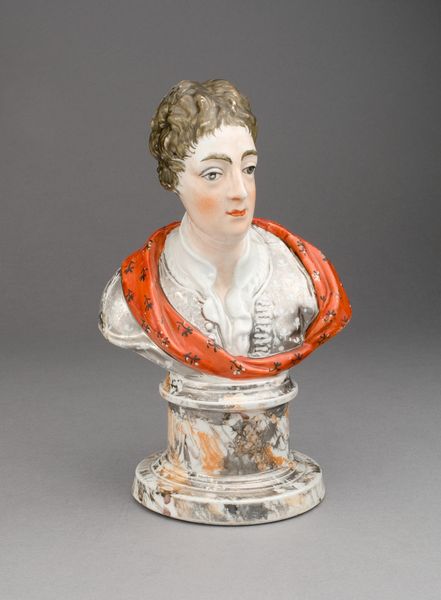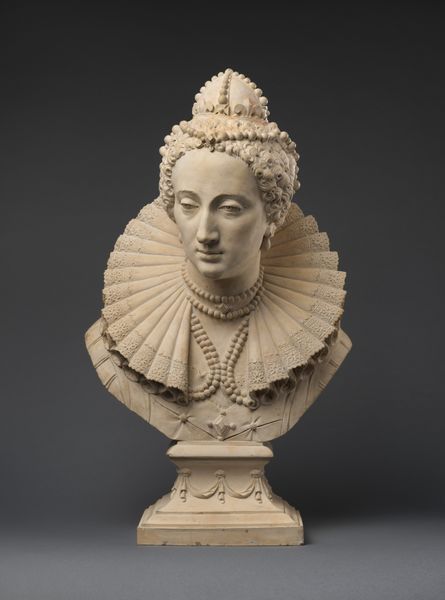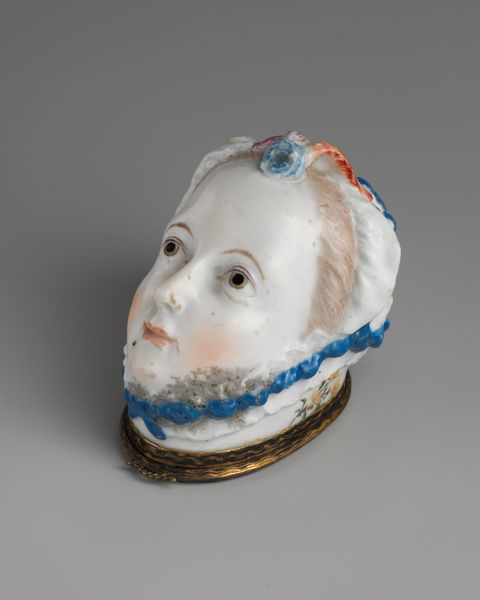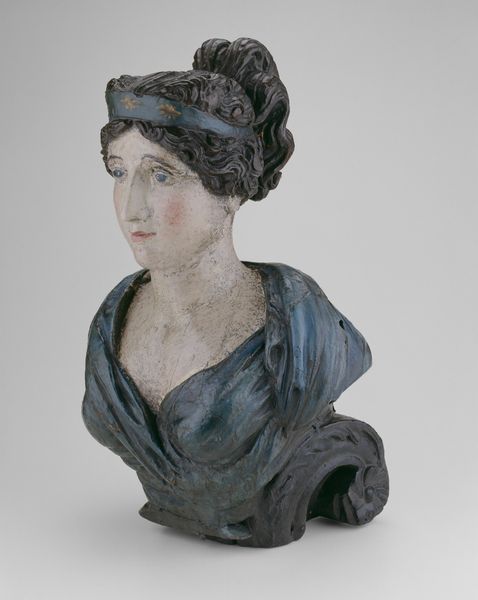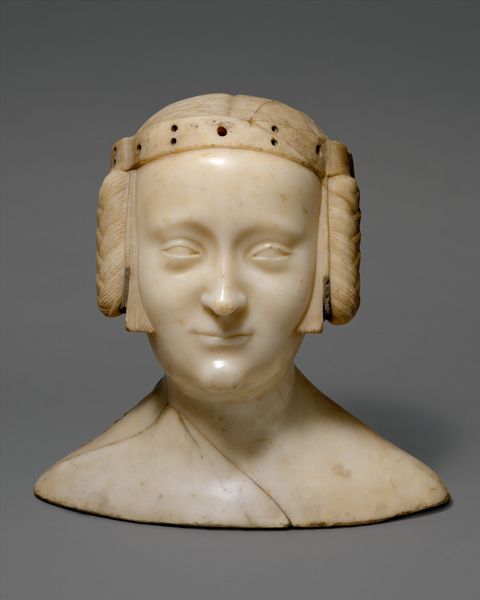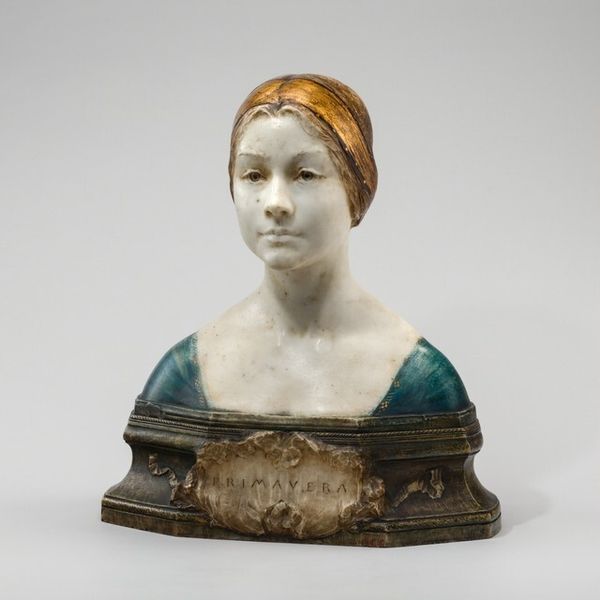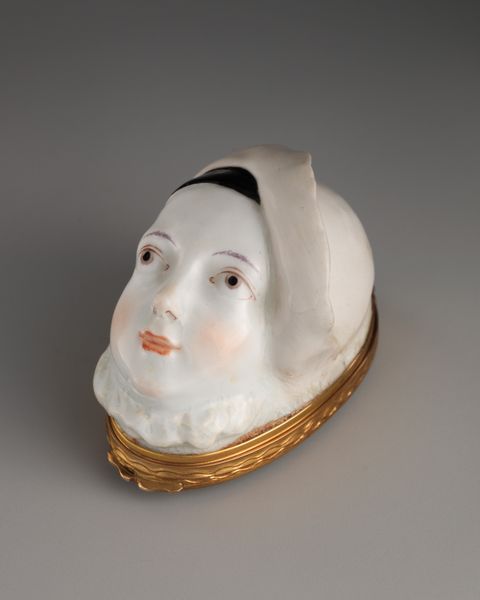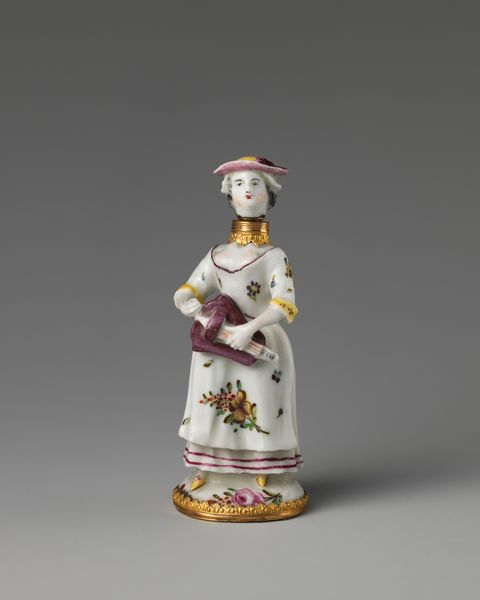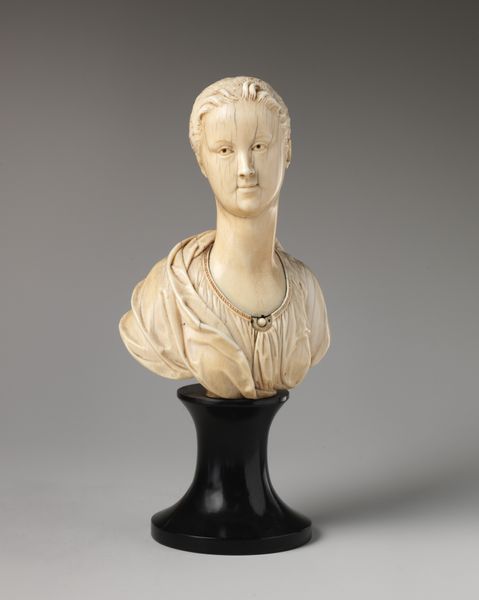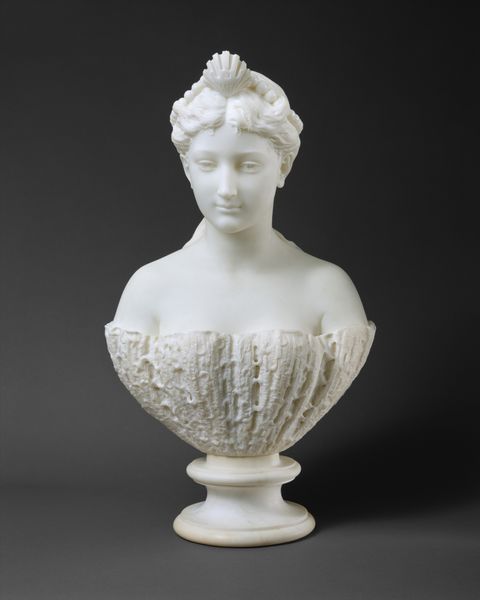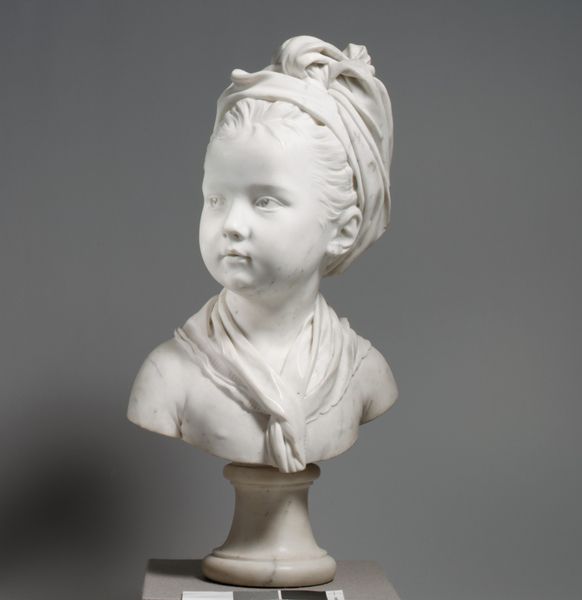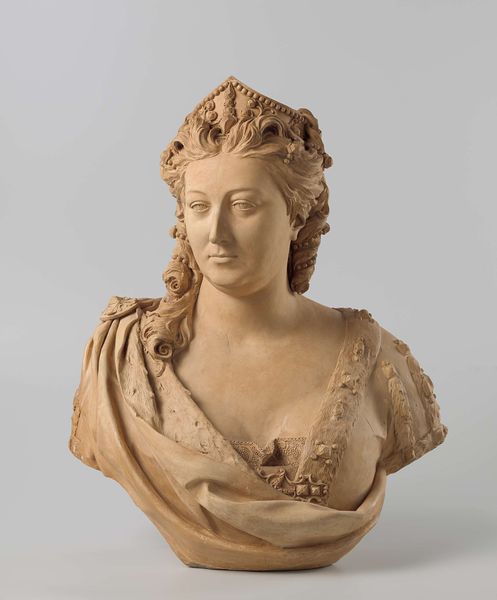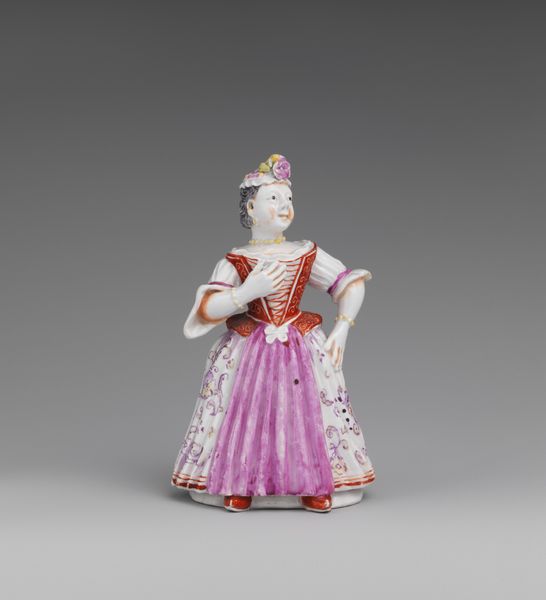
ceramic, porcelain, sculpture
#
3d sculpting
#
3d model
#
head
#
ceramic
#
jewelry design
#
porcelain
#
3d character model
#
sculpture
#
child character design
#
metallic object render
#
men
#
3d modeling
#
3d animation
#
watercolour illustration
#
decorative-art
#
3d character modeling
Dimensions: Overall: 2 × 2 in. (5.1 × 5.1 cm)
Copyright: Public Domain
Curator: Here we have "Lady's Head," a porcelain sculpture created by the Saint James's Factory, sometime between 1745 and 1760. It’s currently housed at the Metropolitan Museum of Art. Editor: My first thought? That porcelain gives her a fragile, almost doll-like quality, but the gilding suggests opulence. What do you think about the factory and the period? Curator: The Saint James's Factory was relatively short-lived, but it was established in the mid-18th century, during a real porcelain craze across Europe, spurred by the elite's hunger for Chinese imports and a fascination with chinoiserie. Editor: A powerful commentary then, on consumption and aspiration. How did this factory distinguish its pieces within that trend? Curator: Indeed, Saint James tried to take a unique position in that industry. The gilding we see here, along with other decorative arts flourishes, really underscores its aspiration to produce luxury items for a discerning clientele that sought unique objects. It seems clear that it participated and sought to solidify its standing within London's increasingly competitive porcelain market. Editor: And what do you see as the primary intention of the artist or workshop that created this sculpture? Curator: I think that this "Lady's Head" demonstrates the technical mastery the Saint James's Factory aspired to, specifically its control of a material that had only been attainable to few craftspeople at that time. These luxury products mirrored the self-assurance of a wealthy and expanding middle class seeking cultural capital through ownership of coveted things. It really exemplifies how the rising middle class impacted the market for material culture in England at the time. Editor: It really does emphasize how objects both reflect and construct the social landscape, I feel like I see the portrait of London society. Curator: Exactly. By exploring the intersection of labor, technology, and taste, we can truly understand this sculpture’s contribution to the broader story of material culture during the era. Editor: So fascinating! Examining the layers within something as seemingly simple as this portrait offers us an understanding of its impact. Curator: Absolutely, let’s keep that perspective in mind as we consider our next stop.
Comments
No comments
Be the first to comment and join the conversation on the ultimate creative platform.
